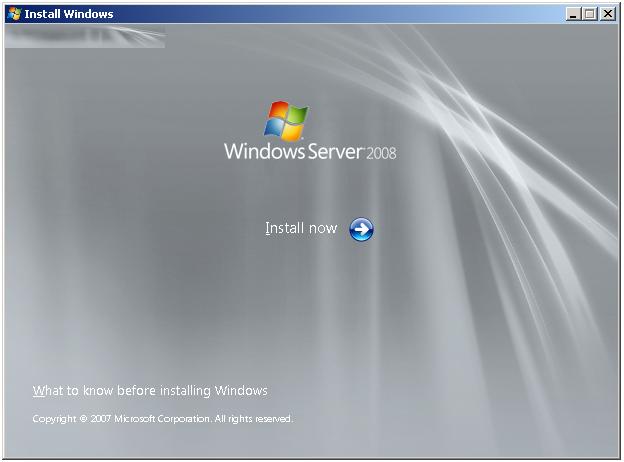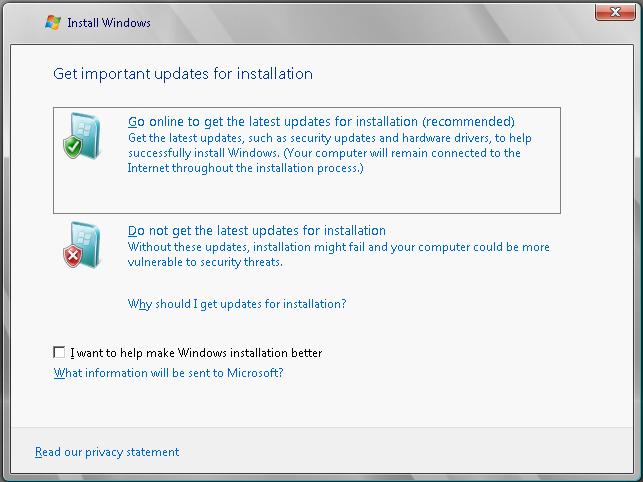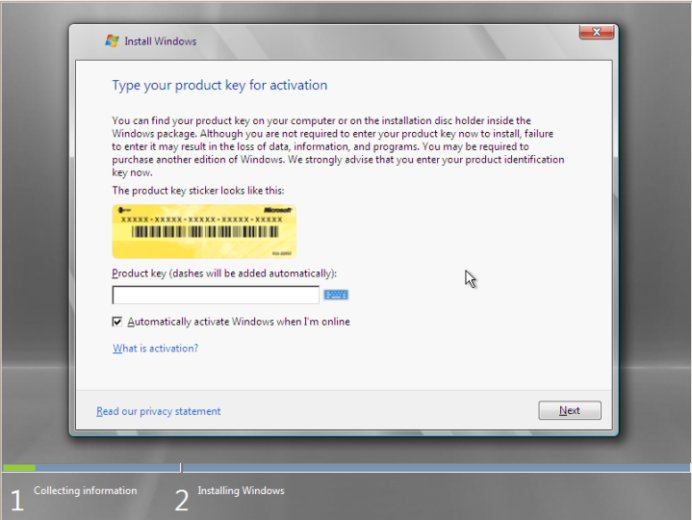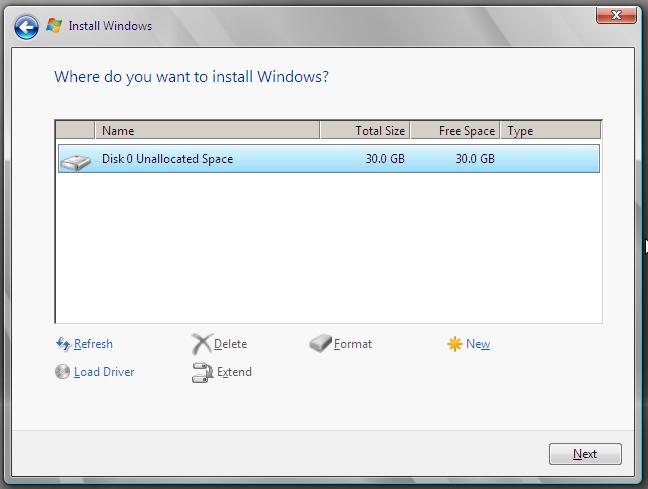Difference between revisions of "Performing a Windows Server 2008 Upgrade"
(→How an Upgrade to Windows Server 2008 Works) |
(→Performing the Upgrade) |
||
| Line 82: | Line 82: | ||
| − | [Image:windows_server_2008_install_now.jpg|The Windows Server 2008 Install Now screen]] | + | [[Image:windows_server_2008_install_now.jpg|The Windows Server 2008 Install Now screen]] |
| Line 95: | Line 95: | ||
[[Image:windows_server_2008_activation.jpg|The Windows Server 2008 Product Activation Screen]] | [[Image:windows_server_2008_activation.jpg|The Windows Server 2008 Product Activation Screen]] | ||
| − | |||
== Windows Server 2008 Activation == | == Windows Server 2008 Activation == | ||
Revision as of 19:10, 1 July 2008
In the previous chapter of Windows Server 2008 Essentials we looked at performing a clean installation of Windows Server 2008. Whilst this approach is acceptable in some instances, it is probably more common that Windows Server 2008 will be installed as an upgrade to a previously installed version of Windows (specifically Windows Server 2003, Windows 2000 or a lesser edition of Windows Server 2008).
In this chapter the steps involved in performing an upgrade to Windows Server 2008, together with supported upgrade paths will be covered in detail.
Windows Server 2008 Upgrade Paths
Before performing an upgrade to Windows Server 2008 the key prerequisite is that the currently installed operating system provides an upgrade path to the chosen edition of Windows Server 2008. It is not, for example, possible to upgrade to Windows Server 2008 from Windows XP. In addition it is vital that the target hardware be of a suitable high specification to support Windows Server 2008. For details of the system requirements refer to Windows Server 2008 Editions and System Requirements.
Upgrades are possible from a number of older Windows Server versions as outlined in the following table:
| Operating System | Upgrade Options |
|---|---|
|
Windows Server 2003 R2 Standard Edition |
Windows Server 2008 Standard |
|
Windows Server 2003 R2 Enterprise Edition |
Windows Server 2008 Enterprise |
|
Windows Server 2003 R2 Datacenter Edition |
Windows Server 2008 Datacenter |
|
Windows Server 2008 Standard |
Windows Server 2008 Enterprise |
|
Windows Server 2008 Enterprise |
Windows Server 2008 Datacenter |
How an Upgrade to Windows Server 2008 Works
During the Windows Server 2008 upgrade process the files, folders and applications associated with the previously installed Windows version are relocated to a windows.old folder and all user settings stored. Once this task is complete, a clean installation of the new operating system is performed and the saved user settings migrated to the new environment.
Performing the Upgrade
An upgrade to Windows Server 2008 can only be performed by launching the installation process from within the currently installed operating system. it is not possible to perform an upgrade by booting from the installation media. To initiate the upgrade process, therefore, boot the existing Windows installation (if not already running), log into an account with administrative privileges and insert the installation DVD. If the system is configured to do so, the setup process on the DVD will autorun once it is mounted displaying the Windows Server 2008 installation screen:
From this screen the installation may be started by clicking on the Install now button. Alternatively, the What To Know Before Installing Windows Server 2008 link will provide information of system requirements and advice about issues such as application and driver compatibility. Clicking on the Install now proceeds to the next screen. If the setup program detects an internet connection on the host operating system the next screen displayed will
Product Key Activation screen shown in the following figure:
Windows Server 2008 Activation
As mentioned previously it is not necessary to enter a key at this point in order to run Windows Server 2008. Failure to enter an activation key simply means that the operating system run in trial mode which can only be extended for a total of 270 days. If you have an activation key enter it here. Alternatively click on the Next button to proceed to the next stage of the installation. If an activation key was not entered a warning dialog will appear stating that it may be necessary to re-install Windows at a later date (i.e when the trail ends) resulting in lost data. In practice it is possible to perform the activation before the trial ends without the need to re-install. If presented with this dialog click "No" to proceed.
If an activation key was not entered the next screen will ask that the required Windows Server 2008 Edition be selected. Select the desired edition, check the box to confirm the selection and click Next to proceed. If an activation key was entered the installer already knows which edition to install. Note that Core versions of each edition are available. The core installation is a minimal installation of the operating system with no GUI interface and only a subset of services available by default. This configuration is intended for headless servers and situations where the smallest possible attack surface is required.
Read and agree (assuming you do agree) to the license terms and proceed to the next screen where the options to upgrade or perform a clean installation are provided. If the installer was invoked by booting from the DVD, or the host operating system is not suitable for upgrade on the clean installation option will be provided. Select this option to proceed.
Disk and Partition Management
The next screen provides an interface for selecting and configuring disks and partitions for the installation. Initially, this screen displays a list of physical disk drives available on the system together with any pre-existing partitions on this disks.
Clicking on the Drive options (advanced) displays a number of options including the deletion, creation and formatting of partitions on the listed disk drives. In addition, the Load driver option allows any driver necessary to access a disk drive to be loaded into to system so that that device may be used as an installation destination. For the purposes of this installation the entire disk drive will be used as the installation target. The following figure shows a single, unpartitioned disk drive with the Drive options displayed:
Click next to begin the installation process. A new screen will appear listing the progress of the installation and highlighting the fact that the system will reboot a number of times during the installation.
Accessing the Command Prompt During Installation
At any point during the setup process (except when the installation is actually being performed) Shift+F10 may be pressed to gain access to the command-prompt. From within this command prompt window most of the standard Windows Server 2008 command-line tools are available allowing tasks to be performed that might otherwise not be possible from within the setup interface.






